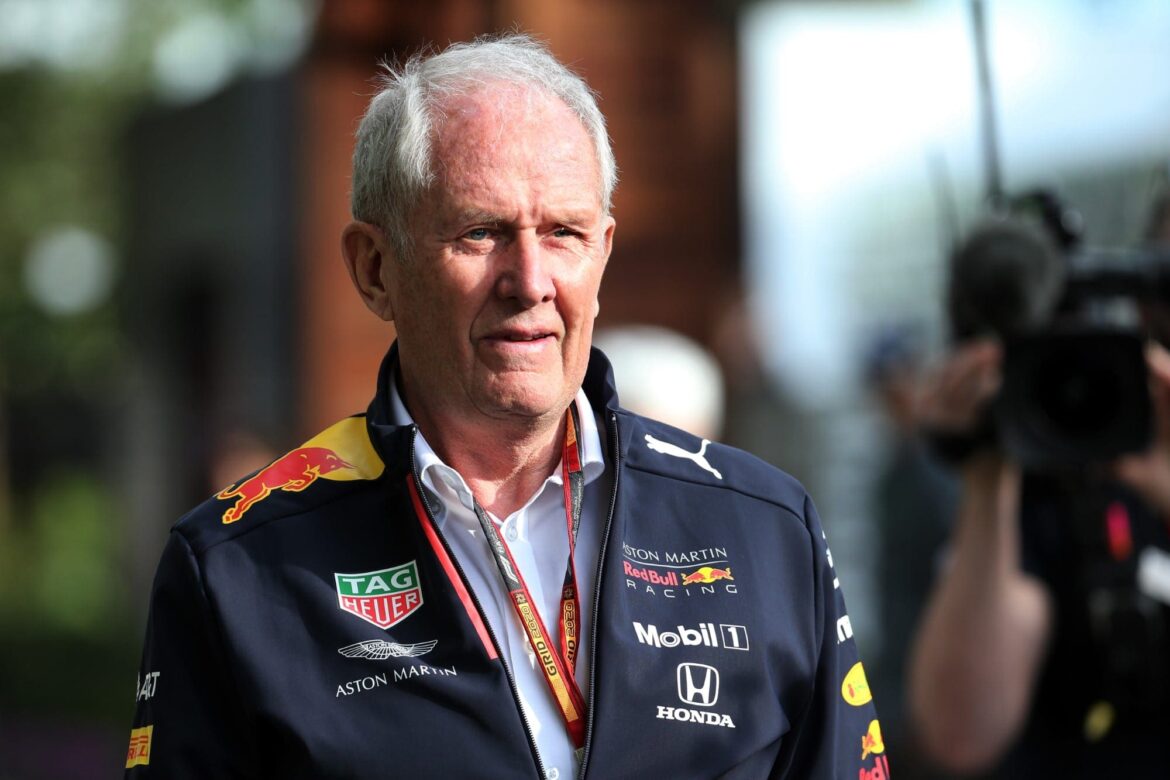Red Bull Racing Faces Challenges Ahead of the Miami Grand Prix
As the Miami Grand Prix approaches, concerns are mounting regarding Red Bull Racing’s performance under high temperature conditions. Helmut Marko, a prominent consultant for the team, has been vocal about his apprehensions, particularly in light of the challenges posed by the expected heat during the race weekend.
In a recent column for Speedweek, Marko referenced the previous Grand Prix in Saudi Arabia, where the McLaren team outperformed expectations during the third practice session, which took place in notably high temperatures. During that session, Max Verstappen, Red Bull’s star driver, found himself nearly eight-tenths of a second behind the McLaren duo. However, a significant shift occurred as the temperature dropped in the evening, allowing Verstappen to rebound and secure pole position during the qualifying session.
Marko’s analysis highlights that while the Miami circuit is distinctly different from the Jeddah layout, the expected high temperatures could pose a similar disadvantage for Red Bull Racing. "We are dealing with a completely different track, but primarily with higher temperatures," he noted. This comment underscores the challenges that come with racing in warmer climates, which can affect car performance and driver strategy.
The expectations for the Miami Grand Prix are that the hot conditions may again favor McLaren. Marko expressed his concerns, stating, "In Miami, we anticipate that conditions will once again favor McLaren." This acknowledgment reflects a broader trend in Formula 1, where certain teams excel under specific conditions while others struggle.
One of Marko’s key points revolved around the urgent need for Red Bull Racing to address this vulnerability. He emphasized the importance of developing a broader operational window for their car, which would allow for improved performance across varying conditions. "Our current task is to create a wider operational window for our car and to mitigate certain weaknesses before the European races, where the climate is expected to be similarly warm," he concluded.
The significance of this statement cannot be understated. As the Formula 1 season progresses into Europe, teams will face a series of races in conditions that could mirror those of Miami. Therefore, addressing these performance issues is crucial for maintaining competitiveness.
In the world of Formula 1, where every fraction of a second counts, the ability to adapt to changing conditions can make or break a team’s success. Red Bull Racing’s challenges in Miami may serve as a litmus test for the team’s adaptability and resilience in the face of adversity. The focus on performance under high temperatures is not merely a tactical consideration but a crucial aspect of the team’s overall strategy moving forward.
As the Miami Grand Prix weekend approaches, fans and analysts alike will be closely monitoring how Red Bull Racing adapts to these challenges. Will they rise to the occasion and overcome the hurdles posed by the heat, or will they struggle under the pressure? The answers to these questions will unfold in the coming days as the teams take to the track.
In the world of motorsport, preparation is key. Red Bull Racing must ensure that their car is optimized for the unique demands of the Miami circuit. This includes not only the performance of the car itself but also the strategies employed by the team during practice, qualifying, and the race. High temperatures can lead to tire degradation, increased fuel consumption, and other factors that can significantly impact race outcomes.
Moreover, driver conditioning plays a vital role in high-temperature races. Drivers must maintain peak physical fitness to withstand the rigors of racing in hot conditions. Red Bull Racing has a strong driver lineup, with Verstappen and his teammate poised to deliver exceptional performances, but they will need to be at their best to compete effectively against rivals like McLaren.
As the race weekend unfolds, Red Bull Racing will likely engage in extensive data analysis to understand how their car behaves in the heat. This will involve adjusting setup parameters, tire selections, and fuel strategies to maximize performance. The team’s engineering staff will work tirelessly to identify any weaknesses in their car’s performance characteristics and implement solutions swiftly.
The Miami Grand Prix is not just another race on the calendar; it represents a critical juncture in the season for Red Bull Racing. The outcome could have implications that extend beyond just points in the championship standings. A strong performance could bolster team morale and confidence, while a lackluster showing may raise further questions about their competitiveness under challenging conditions.
Additionally, the fan engagement surrounding the Miami Grand Prix adds another layer of complexity. With a vibrant local culture and a passionate fan base, the atmosphere will be electric. This environment can provide a motivational boost for drivers and teams but can also introduce additional pressures.
As the race draws nearer, the spotlight will be on Red Bull Racing to see if they can rise to the occasion. The heat of Miami may test their limits, but it also presents an opportunity for growth and improvement. The challenges they face are not insurmountable; rather, they represent a chance to refine their approach and emerge stronger.
With the right strategies in place, Red Bull Racing can leverage their strengths while addressing their vulnerabilities. The Miami Grand Prix will be a defining moment in their season, and how they handle the heat could pave the way for success in the races to come.
Ultimately, the Miami Grand Prix serves as a reminder of the unpredictable nature of Formula 1. High temperatures can turn the tides in favor of one team over another, making adaptability and quick decision-making essential for success. As the teams prepare for the challenges ahead, the excitement of the race weekend looms large, promising thrilling action on the track.
